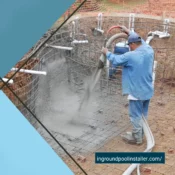Common Mistakes to Avoid During Your Inground Pool Installation

Common Mistakes to Avoid During Your Inground Pool Installation
Embarking on the journey of inground pool installation requires meticulous attention to detail, as overlooking key considerations can lead to significant complications. A prevalent pitfall is inadequate planning and budgeting, which can manifest in unexpected excavation issues and financial overruns. Conducting a feasibility study is not just advisable but necessary, ensuring that the site's conditions align with the project's scope. Furthermore, engaging a certified pool contractor for this assessment can provide invaluable insights. Yet, even with a perfect plan, neglecting permits and regulations poses substantial legal risks. How can these pivotal aspects be seamlessly integrated into your strategy?
Planning and Budget Errors
When embarking on the installation of an inground pool, a common pitfall is inadequate planning and budgeting, which can lead to unexpected delays and cost overruns. The crux of effective pool installation lies in the meticulous formulation of a comprehensive project blueprint.
This begins with a feasibility study, assessing site conditions, soil composition, and hydrology to predict potential excavation challenges. Engage with a certified pool contractor to perform a detailed scope assessment, ensuring alignment with your vision and financial constraints.
A robust financial plan is crucial. It should encompass not only the obvious construction expenses but also ancillary costs such as landscaping, drainage systems, and contingency funds for unforeseen developments. Utilize a cost breakdown structure (CBS) to delineate each component's financial allocation, ensuring transparency and financial discipline throughout the project's lifecycle.
Moreover, integrating a project timeline with milestone markers is imperative for tracking progress and maintaining stakeholder engagement. Leverage project management software to synchronize tasks, allocate resources efficiently, and mitigate risk.
Ignoring Permits and Regulations
Overlooking permits and regulations can be a significant misstep in the inground pool installation process, often culminating in legal ramifications and project setbacks. Ensuring compliance with local zoning laws and building codes is not merely a procedural necessity but a cornerstone of successful project execution.
The intricate web of municipal, county, and state regulations requires thorough due diligence to avert potential fines, legal disputes, or enforced project cessation. A comprehensive understanding of setback requirements, pool barrier mandates, and utility easements is pivotal. Engage with local planning departments to secure the requisite permits before breaking ground.
This proactive approach mitigates the risk of costly redesigns and ensures alignment with community standards, fostering a sense of belonging and acceptance within your neighborhood. Furthermore, adherence to regulations surrounding environmental considerations, such as drainage, water usage, and chemical disposal, is crucial for sustainable pool ownership.
Collaborate with certified pool professionals who are well-versed in these regulations to streamline the compliance process. Their expertise can provide invaluable insights into navigating the complex regulatory landscape, ensuring a seamless installation that enhances your property while respecting legal obligations. Ultimately, prioritizing permits and regulations is essential to achieving a legally sound and community-friendly inground pool project.
Inground pool installation demands meticulous planning akin to a conductor orchestrating a symphony. Inadequate planning and budgeting can result in unforeseen excavation challenges, while neglecting permits and regulations may lead to legal entanglements. A comprehensive feasibility study, coupled with collaboration with a certified pool contractor, ensures a detailed scope assessment. Compliance with zoning laws, building codes, and environmental regulations is non-negotiable. A robust financial plan encompassing ancillary costs is essential for a seamless installation process.
All Categories
- Concrete
- Concrete
- Concrete pools
- Construction
- Custom Features and Add-ons
- Design
- Design
- Design
- Design & Construction
- Design and Planning
- Features & Customization
- Infinity edge
- inground pool
- inground pool builder
- inground pool installer
- Installation
- Installation Process
- Legal & Administrative
- Materials
- planning and design
- Pool Aesthetics and Customization
- Pool Design
- Pool Equipment
- Pool Features
- Pool Features
- Pool Installation Process
- Pool Materials
- Pool Materials
- Pool Types
- Project Planning
- Renovation
- Resurfacing
- top sights
- Types of Inground Pools
- Types of Inground Pools
- Types of Inground Pools
- Types of Inground Pools
- Water Treatment



